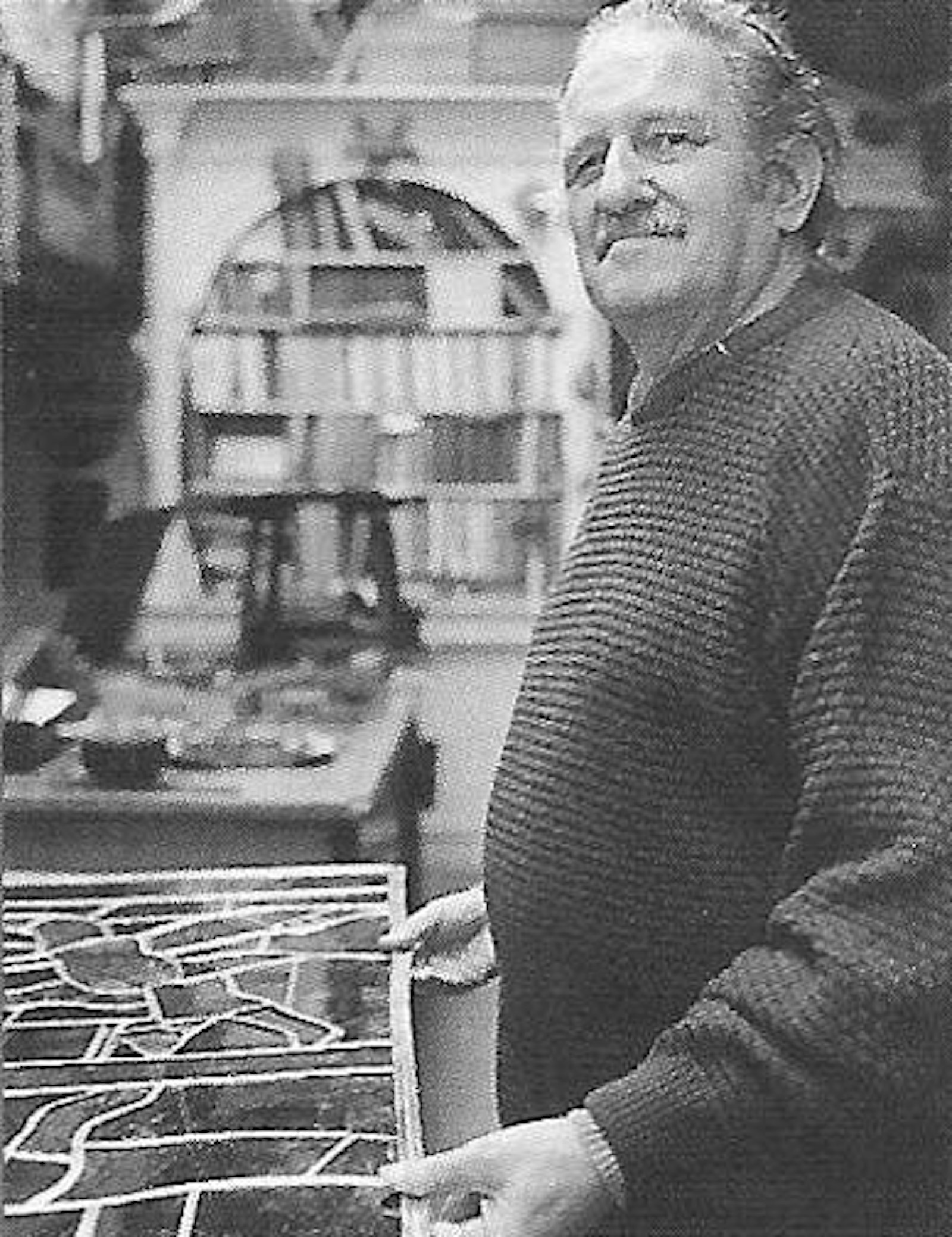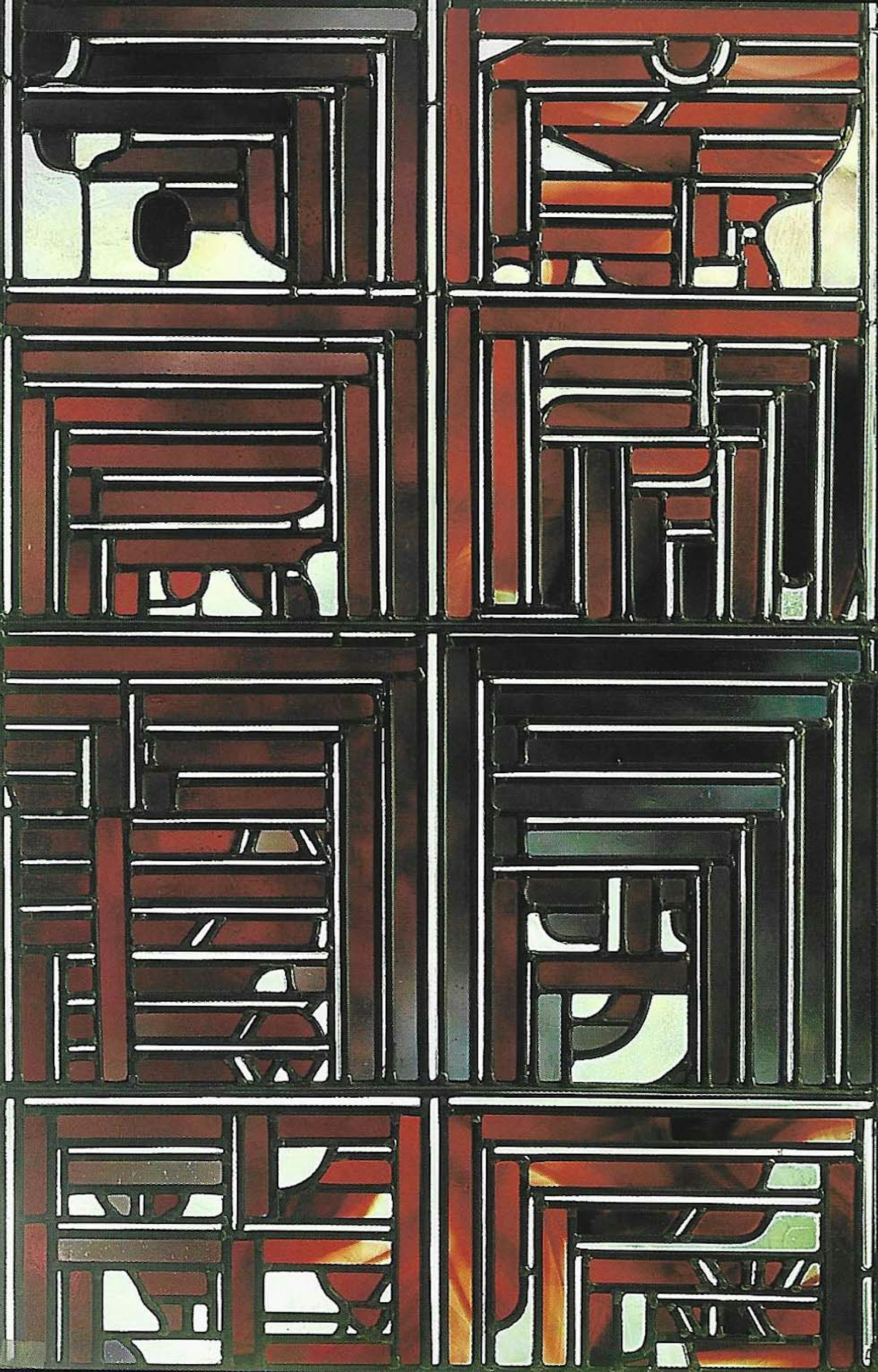de Velde
Armand Blondeel
In 1945, the young Armand Blondeel began his career in the traditional manner as an apprentice in the workshop af the stained-glass artist Coppejans in Ghent.
This was a heyday for restoration because many stained-glass windows had been damaged during the war. He therefore became acquainted with all the earlier styles in the field of stained-glass art. Moreover, as a young man he had high artistic ambitions and therefore took evening and weekend classes, respectively at the St. Lucas lnstitute and at the Academy in Ghent.
In 1952, this turned him into an authentic stained-glass artist. Very quickly, his work drew attention at the World Exhibition of 1958 in Brussels where he was awarded a gold medal for his participation in the exhibition Moderne Kunstambachten in België, e.g. for his work Abstract, which is also included in the present exhibition of the 'van de Velde Prizes'.
In 1962, he held his first individual exhibition in the former St. Pieters Abbey in Ghent, followed by a number of personal exhibitions (Hasselt, 1968; Vaalbeek, 1970) and a magnificent apotheosis in 1980 when he filled the complete exhibition space of the Museum for Decorative Arts with fifty-four stained-glass windows.
In the accompanying catalogue, the critic Fons De Vogelaere wrote that Blondeel had a great love for the art of drawing and painting which turned him into a master of the 'grisaille technique'. According to the same author, he found his sources both in the late Expressionism of the fifties and in the 'Nouvelle Ecole de Paris'. His oeuvre contains a great number of abstract subjects with references to architectural elements such as columns, stairs, perspective views, although his drawings reveal a pleasure in the figurative. The importance of the contemporary stained-glass art of Armand lies in its link with the arts of painting and drawing and the new ground he broke in this field for the figurative stained-glass window. From after 1960 up till the late eighties, figurative art was not held in high esteem. This did not leave its marks on Blondeel however. He painted whatever he wanted and refused to be dictated. The whole atmosphere of his oeuvre is intimate, even in his large monumental projects. This impression does not only result from the detailed compositions in his stained-glass windows, but also from his preference for dark passages in the stained glass. Blondeel never turns his back to tradition. He sticks to leaded windows. When he experiments, he never leaves the concept of 'stained glass'. Moreover these experiments are for more artistic than technical although he does not fear technical challenges. His oeuvre is at best when it is integrated in architecture.
This is what he says: "I would like people to know that what is behind the stained-glass window is very important to me, because it endows the work with colour and life: clouds, which are very versatile in these regions; a sunset in which red dominates the sky; nice weather in which blue is the main colour; when it rains everything is grey".
In our opinion, his most splendid works are the windows in the chapel of the St. lmelda Hospital in Bonheiden from 1975. He himself is very attached to his work for the Textile Centre of the ABVV on the Vrijdagmarkt in Ghent, dating from 1969. Once more, we would like to draw the attention to the fact that Armand Blondeel is the founder of one of those rare artistic family workshops in which his two sons Herman and Sander have learned their trade which they now continue each in their own manner.
In the course of his career, Armand Blondeel revived the stained-glass window both as a living medium integrated in architecture and as an autonomous artistic medium.



